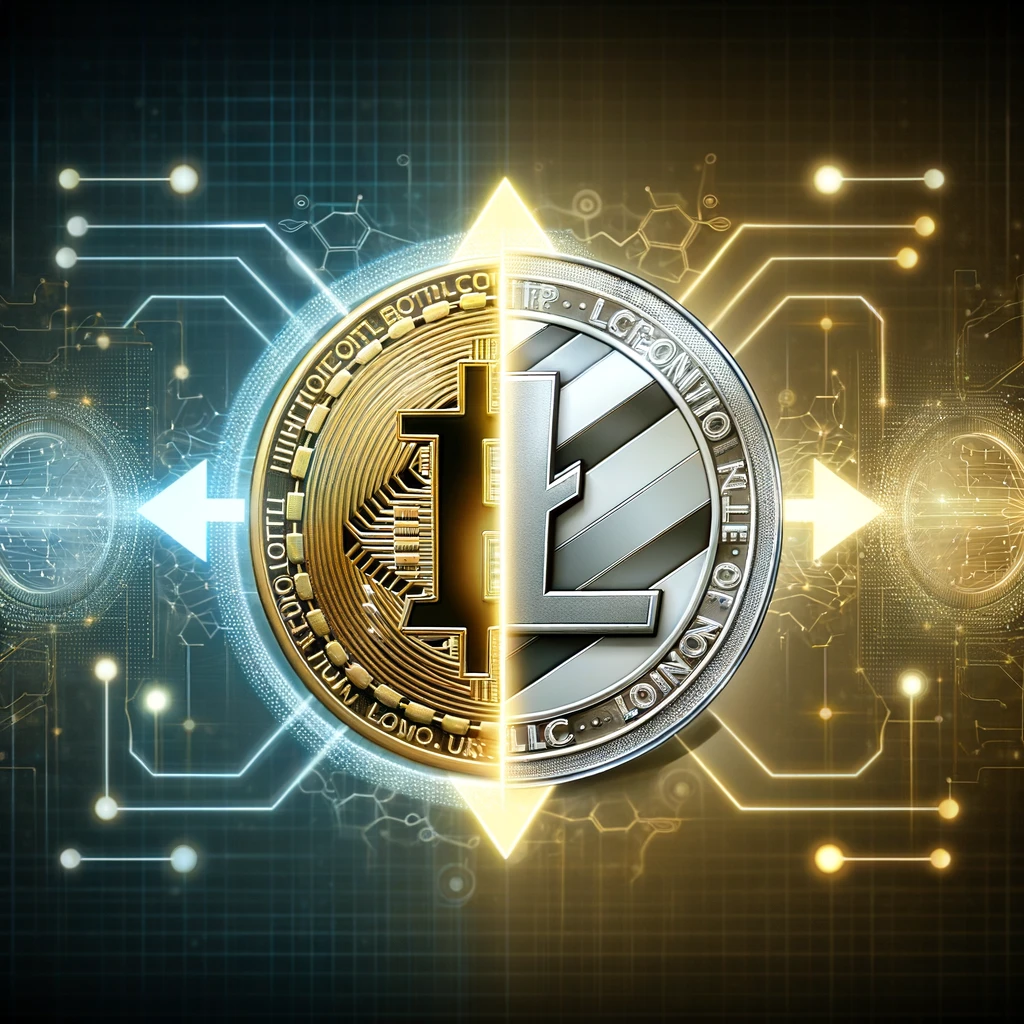Navigating the Crypto Transition: A Comprehensive Guide to Swapping Bitcoin (BTC) for Litecoin (LTC)

In the vast and ever-expanding universe of cryptocurrencies, the ability to adeptly maneuver between different digital currencies is not just a valuable skill but a strategic necessity for investors and enthusiasts alike. This extensive guide is dedicated to exploring the nuances of swapping Bitcoin (BTC), the first and most revered cryptocurrency, for Litecoin (LTC), a digital currency renowned for its speed and efficiency. This swap is more than a mere exchange of digital assets; it represents an insightful journey through the evolving landscape of blockchain technology.
Understanding Bitcoin and Litecoin
To appreciate the intricacies of the BTC to LTC swap, it is essential to first comprehend the fundamental aspects of these two cryptocurrencies. Bitcoin, the brainchild of the mysterious Satoshi Nakamoto, emerged in 2009 as the first decentralized digital currency. Built on a groundbreaking blockchain technology, Bitcoin has become synonymous with cryptocurrency itself, often referred to as digital gold due to its store-of-value properties.
Litecoin, created in 2011 by Charlie Lee, is often considered the silver to Bitcoin’s gold. It was designed to improve upon Bitcoin’s shortcomings, offering faster transaction speeds and lower fees, making it an ideal choice for smaller, everyday transactions. Litecoin’s creation of a lighter version of Bitcoin while maintaining the core concepts of its predecessor has solidified its position in the top echelons of the cryptocurrency market.
Why Swap BTC for LTC?
The motivation behind converting BTC to LTC can stem from a variety of reasons. Investors may look to diversify their digital asset portfolios, balancing the high-value, store-of-value aspect of Bitcoin with the transactional efficiency of Litecoin. Others might be influenced by Litecoin’s shorter block generation time and its appeal for regular transactions. Additionally, speculative interests in market trends or a belief in Litecoin’s long-term potential could also drive the decision to swap.
The Swap Process: A Detailed Exploration
Securing Wallets: The first step in the swap process involves ensuring secure and accessible wallets for both BTC and LTC. These wallets will store your cryptocurrencies before and after the exchange.
Choosing the Right Platform: Selecting a cryptocurrency exchange or swapping service that supports BTC to LTC transactions is crucial. Factors to consider include the platform’s security, transaction fees, user interface, and exchange rates.
Initiating the Exchange: Deposit your BTC into the chosen platform. Navigate to the exchange section, select the BTC/LTC trading pair, and specify the amount of BTC you wish to convert.
Executing the Swap: Review all the transaction details, including the exchange rate and any fees. Confirm the transaction to proceed with the swap.
Receiving Litecoin: After the swap is processed, LTC will be credited to your exchange wallet. It’s recommended to transfer your LTC to your personal wallet for better security.
Market Dynamics and Timing
The timing of your swap can significantly impact its outcome, considering the volatility of cryptocurrency markets. Staying informed about the latest market trends and news can assist in making a well-informed decision. However, given the unpredictable nature of cryptocurrencies, perfect timing remains elusive.
Emphasizing Security
Security is paramount in any cryptocurrency transaction. Use trusted platforms with strong security measures, keep your private keys secure, and be vigilant against phishing attempts and scams.
Legal and Tax Implications
It’s important to be aware of the legal and tax implications of cryptocurrency swaps in your jurisdiction. Cryptocurrency regulations can vary, so staying informed and compliant is essential. Consulting with a financial expert is often beneficial for navigating these complexities.
Litecoin’s Market Position and Potential
Understanding Litecoin’s role in the broader cryptocurrency ecosystem is vital. Its positioning as a faster, more efficient alternative to Bitcoin makes it an interesting asset for both transactional use and speculative investment.
Conclusion: A Thoughtful Crypto Strategy
Swapping BTC for LTC is more than just a financial transaction; it’s a strategic decision reflecting an understanding of the diverse functionalities and potentials within the crypto world. Whether motivated by investment diversification, belief in Litecoin’s technology and potential, or market-driven decisions, this swap represents a significant step in any crypto enthusiast’s journey. As the landscape of digital currencies continues to grow and evolve, such swaps underscore the dynamic and multifaceted nature of the cryptocurrency market, highlighting the continuous innovation and opportunities within this fascinating space.